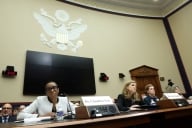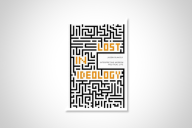You have /5 articles left.
Sign up for a free account or log in.
On first reading the title of Timothy Recuber’s Consuming Catastrophe: Mass Culture in America’s Decade of Disaster (Temple University Press), my guess was that it would be about the 1970s -- that is to say, the era of my childhood, when movies like Earthquake, The Poseidon Adventure, The Towering Inferno and The Hindenburg were the talk of the playground. Besides the disaster movies (which were a genre unto itself, for a few years), there were best-selling books and TV fair of similar ilk.
It was all pretty formulaic -- even ritualistic. The strains of numerous crises in public life (Watergate, the oil embargo and inflation, plus aftershocks from the 1960s) were translated into the language of blockbuster melodrama. The spectacular disaster on the screen or the page enacted a kind of miniature social implosion, its destructive force revealing the inner strengths or vices of the characters who had to face it. Various embodiments of evil or dumb authority would perish. Survivors of the disaster would reunite with their families or reconnect with their values.
The genre’s chief weakness was that the supply of viable disaster scenarios was not unlimited. The point of exhaustion came, as I recall, with a made-for-TV movie-of-the-week involving a swarm of killer bees. In retrospect, the whole period looks like one big anxiety disorder. Ronald Reagan never appeared in a disaster movie, but his election in 1980 probably owed something to the genre insofar as the public could imagine him guiding it to safety through all the debris.
In Consuming Catastrophe, Recuber, a visiting assistant professor of communication at Hamilton College, has a another period and variety of spectacle in mind: the real-world disasters from the first decade of this century (Sept. 11, Hurricane Katrina, the Virginia Tech shootings, the BP offshore oil spill, the near collapse of the financial system in 2008), rather than symptomatic fictions churned out as entertainment.
The contrast is also one of levels of immediacy and saturation of the public attention. Very few news stories of 40 years ago unfolded with the intensity and duration of real-time coverage that has become the norm -- even when the occasion is something considerably less wrenching than a disaster. This tends to create a public sense of somehow participating in an event, rather than just being informed about it. The potentials and limits of that participation are the focus of much of Recuber’s interest.
The widest frame of his perspective takes in German sociologist and philosopher Jürgen Habermas’s argument that newspapers and magazines were foundational elements of the public sphere of information and reasoned debate that could challenge policies and opinions that derived their force only from established authority or the inertia of tradition. Besides the political and economic issues normally associated with Habermas’s understanding of the public sphere, Recuber notes that “disasters, crises, misfortunes and the suffering of distant others were central topics of discussion there, although [its] literate publics frequently disagreed about the moral and ethical acceptability of such macabre subjects.” The classic instance would be the Lisbon earthquake of 1755 (see this column from 2005, on the disaster’s sestercentennial).
Recuber quotes Adam Smith on what is involved in a sympathetic response to others’ misfortune: “The compassion of the spectator must arise altogether from the consideration of what he himself would feel if he was reduced to the same unhappy situation, and, what perhaps is impossible, was at the same time able to regard it with his present reason and judgment.” This seems carefully balanced -- a synthesis of much public-sphere argument, no doubt. But it is also demanding. It implies some obligation to find an effective means to alleviate the suffering as well as to determine if any part of it was preventable. Sympathy, to use the preferred 18th-century term, was not just a personal emotional response but also a communal force. It held society together and could, if strengthened, improve it.
Fast-forward two centuries and a few decades, and we find the contradictory and perverse situation that Recuber describes in a series of case studies. Means of communication exist that can expand our powers of sympathy and our capacity to intervene to reduce suffering -- and they do sometimes, but in problematic ways. It’s not just that the intensity and pervasiveness of media coverage of disasters can induce what’s become known as “compassion fatigue.” That is certainly a factor, but Recuber emphasizes the more subtle and insidious role of what he calls “the empathic gaze.”
Where sympathy means an awareness of another’s unhappiness as something that can and should be alleviated, empathy, in the author’s usage, “refers to an intersubjective understanding of the other’s plight devoid of the obligation to intervene.” It is a relationship to the other’s suffering that is of a “more passive, vicarious character.” The capacity for empathy is much praised in the contemporary literature of self-help and personnel management. Certainly it’s preferable to the psychopathic indifference which, of late, increasingly seems like the other main option on order. But in Recuber’s estimation it rests content with having reached a secure but passive position vis-à-vis suffering, if not a rather morbidly sensationalistic variety of pity.
My impression is that Recuber, far from chastising us as a generation of moral ghouls feasting on disaster, actually regards sympathy as our original or default mode of moral perspective (rather as some 18th-century thinkers did). His case studies of disasters from 2001 to 2010 are, in effect, accounts of sympathy being frustrated, exploited or otherwise short-circuited in diverse ways by the channels into which the media directs it.
One example stands out in particular and will stick in my memory. It concerns the April 2007 massacre at Virginia Tech, which left 32 dead, followed by the suicide of the gunman, Seung-Hui Cho. Cho sent a multimedia package explaining himself to NBC Nightly News, portions of which were shown on the program two days after the shootings. “We are sensitive to how all of this will be seen by those affected,” the news anchor said, “and we know that we are in effect airing the words of a murderer here tonight.”
No one could accuse him of lacking empathy, anyway; empathy can discharge its responsibilities simply by announcing itself. “The statement was an oddly unbalanced one,” Recuber comments, “… seemingly missing a second half that explained what the benefits of broadcasting the manifesto to be and why they outweighed the concerns of ‘those affected.’ Such a statement never came.”
But of course not! It’s not as if being “sensitive to how all of this will be seen by those affected” compelled the network to spare them anything. Those of us watching disaster movies in the 1970s were on higher moral ground: the entertainment was brainless but at least it involved no disregard for real suffering.








